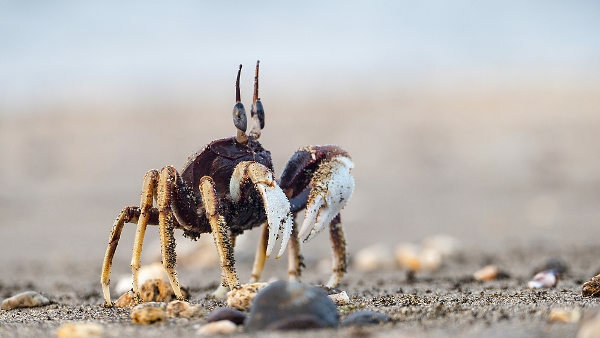So that cargo ships can sail safely when they are lightly or lightly loaded, and to keep their submerged propeller propellers, a net weight is used in tanks located in their basements - water from ballast. It ensures vehicle stability, preventing damage, including preventing the ship from breaking in half or even sinking in storms.
Ballast water is collected in ports and estuaries in inversely proportional to the amount of cargo, ie: the less cargo, the more ballast water! Thus, when unloaded, the ship fills its holds with water from the coast where it is located, and when new goods are stored, this water is dumped.
Thus, ballast water can cause environmental and public health problems, since it can contain sewage and toxic materials, in addition to endemic animal and plant species. The latter, as they do not have natural predators, can reproduce quickly and compete with native species. Bacilli or other forms of pathogenic organisms can also be carried from one region to another along with ballast water discharged into the sea.
As the marine traffic of cargo ships is significant, including on international routes, this water can spread contaminants around the world, as they are moved, per year, approximately 10 billion tons of ballast water in the world and, in Brazil, approximately 80 million annually (and, in our country, around 95% of foreign trade takes place via maritime).
In 2001, ANVISA (National Health Surveillance Agency) started a study that found that in 71% of ballast water samples from ships at five ports in the country had marine bacteria, including the presence of bacilli of Vibrio cholerae O1 – the cause of human cholera, which survives up to 26 days in seawater, up to 19 days in fresh water and up to 12 days in sewage.
Do not stop now... There's more after the advertising ;)
The presence of these organisms can compromise ecosystems and human life if they reach the beaches or if shellfish and shellfish caught in ballast water discharge regions are consumed. Cholera is believed to have been introduced into Brazil in 1991 via ballast water from Peru.
In addition to these vibrios, they have already been found in ballast water samples: intestinal enterococci and Escherichia coli.
Bodies such as the Ministry of Health, Ministry of Environment, National Health Foundation, Maritime Organization International, World Health Organization and ANVISA are carrying out studies on the subject, including in the scope worldwide. Globallast (Global Ballast Water Management Program) seeks strategies and ways to assist this problem, especially in emerging countries.
In 2008, the Environment and Sustainable Development Commission approved a proposal that obliges ships to inspect ballast water. The management plan includes processes to remove, render harmless or prevent the capture or discharge of harmful aquatic organisms and disease-causing agents found in water or sediments, and requires maritime authorities to specify and prohibit the discharge of ballast water in places close to the discharge of sewage, places where the tide swirls sediments and ecological systems sensitive.
By Mariana Araguaia
Graduated in Biology
Would you like to reference this text in a school or academic work? Look:
ARAGUAIA, Mariana. "Ballast water and its potential threats"; Brazil School. Available in: https://brasilescola.uol.com.br/biologia/sgua-lastro-suas-ameacas-potencial.htm. Accessed on June 28, 2021.



